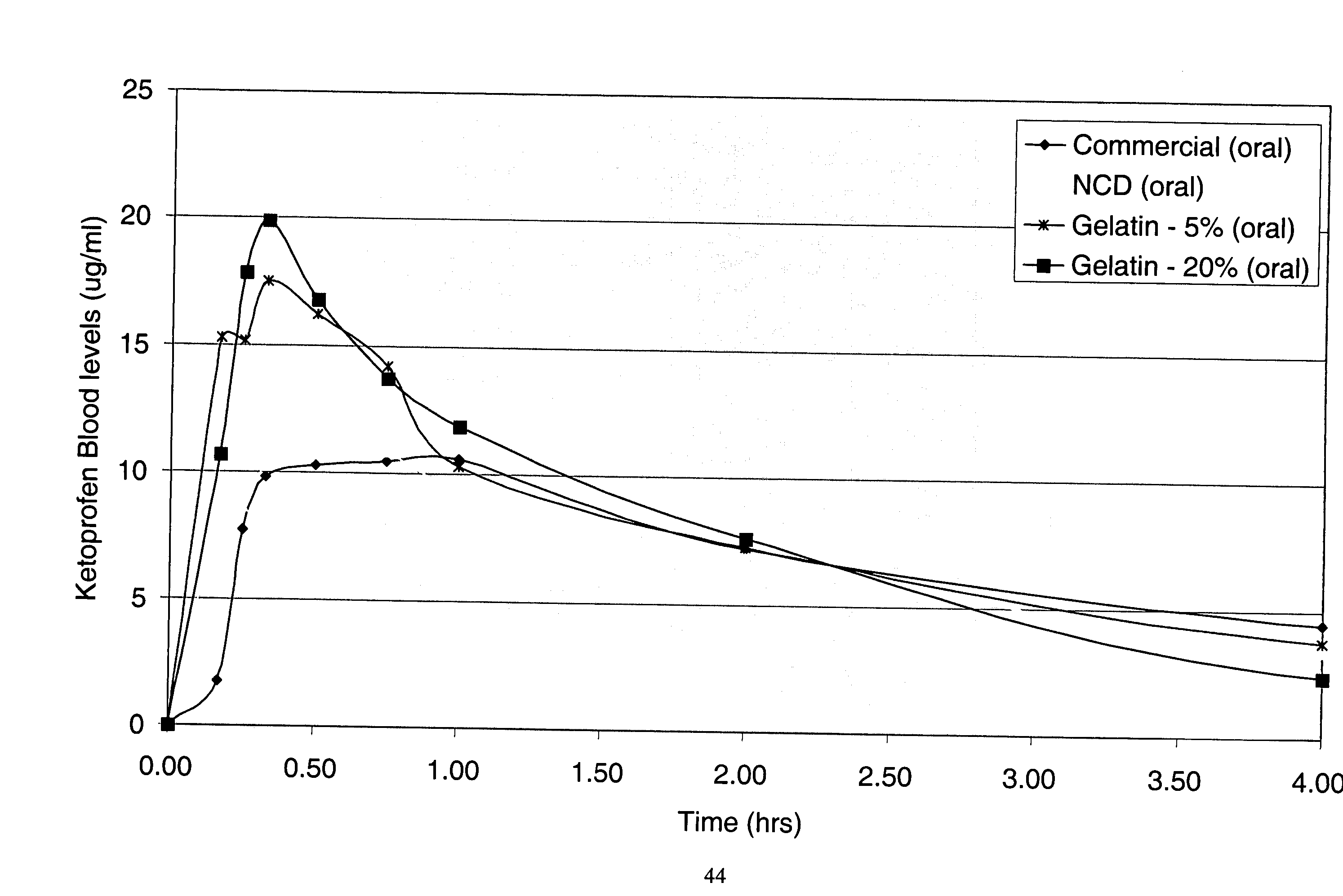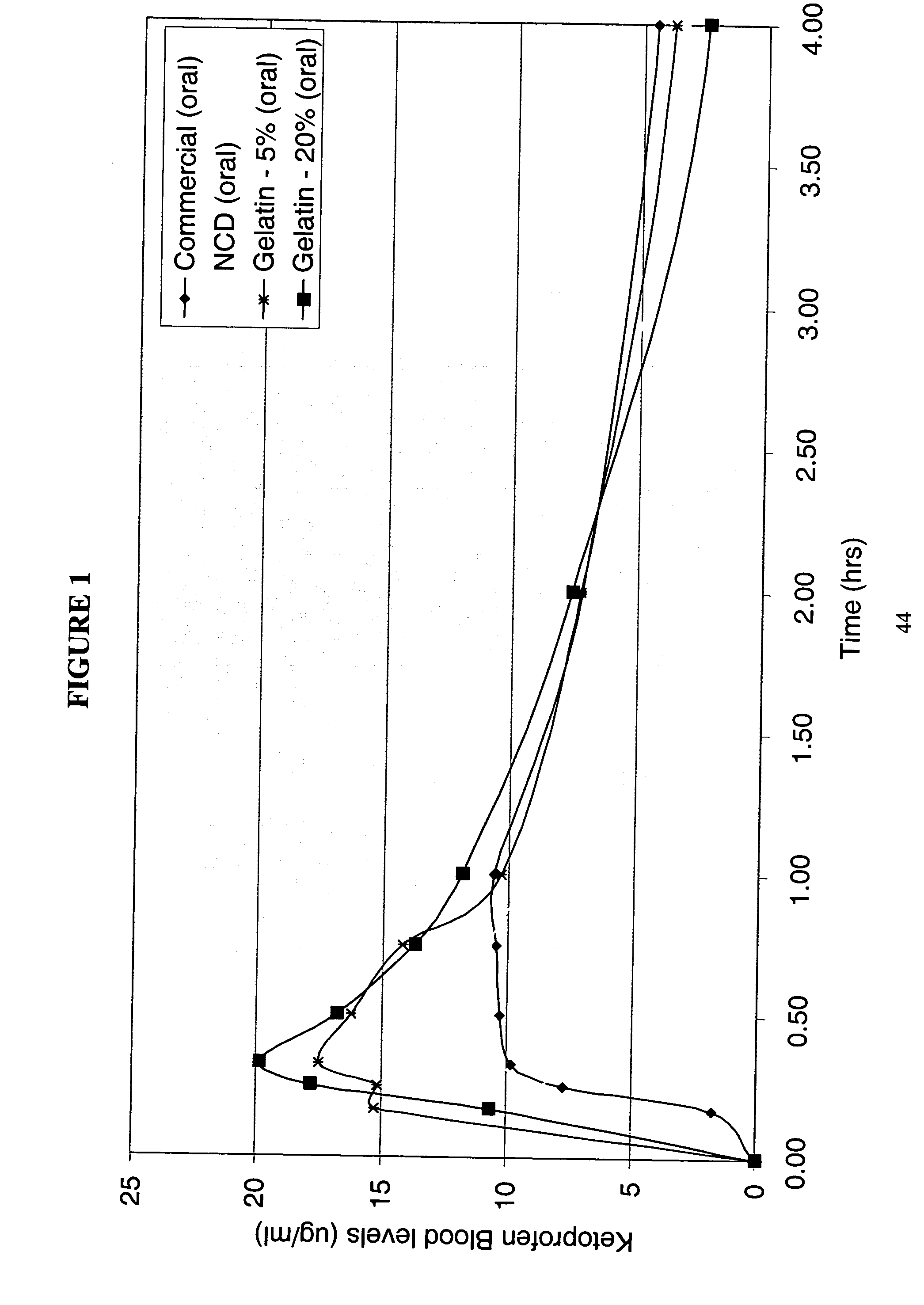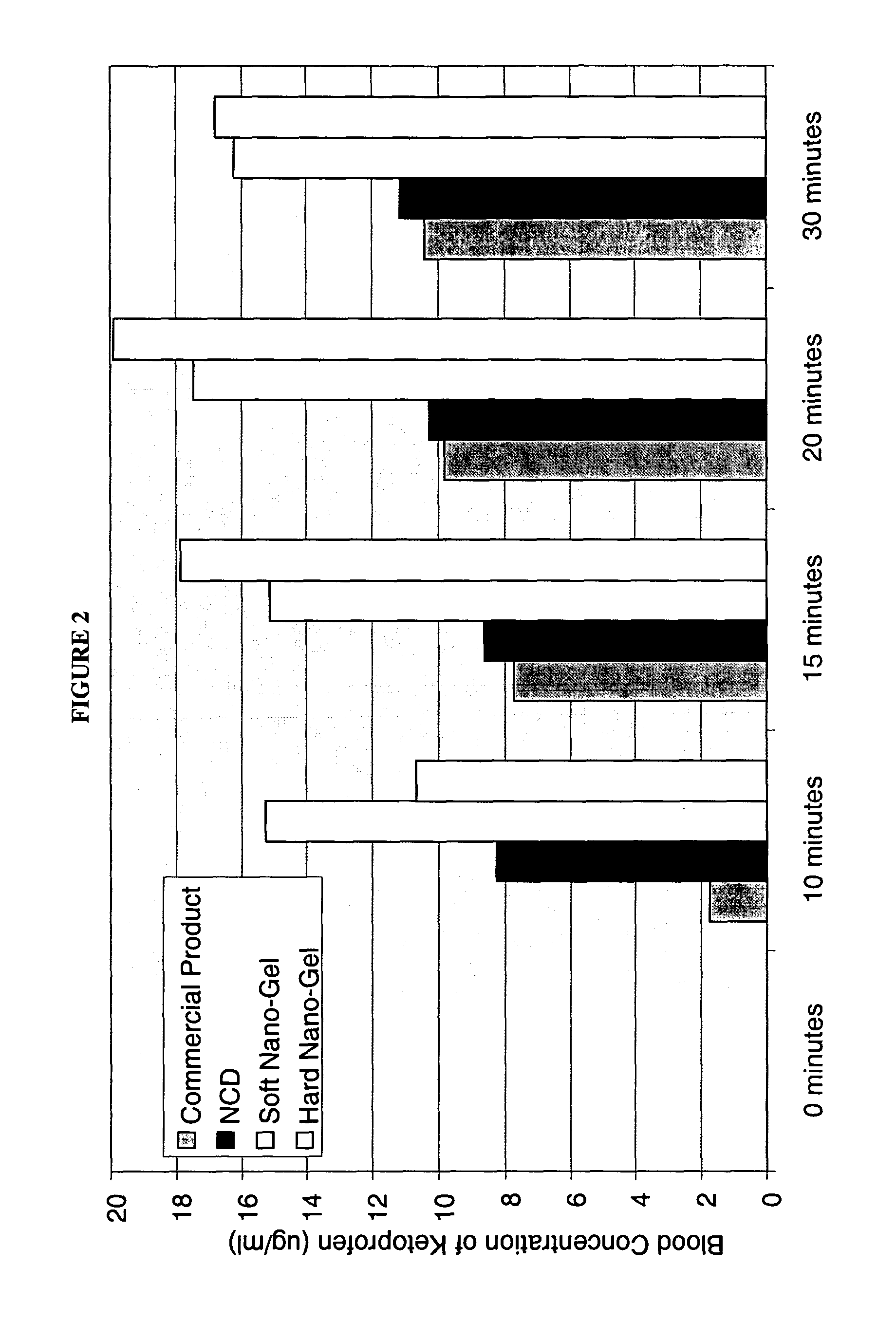Gel stabilized nanoparticulate active agent compositions
- Summary
- Abstract
- Description
- Claims
- Application Information
AI Technical Summary
Benefits of technology
Problems solved by technology
Method used
Image
Examples
example 1
[0179] The purpose of this example was to prepare a nanoparticulate gelatin formulation of Compound A, having analgesic properties.
[0180] A nanoparticulate dispersion of Compound A was prepared, comprising 20% Compound A, 4% Plasdone® S630 (a copolymer of vinyl pyrrolidone and vinyl acetate from ISP), and 0.8% dioctylsulfosuccinate (DOSS). The dispersion was prepared by milling Compound A, Plasdone® S630, and DOSS with a Dyno®-Mill (Type: KDL; Mfg.: Willy A Bachofen AG, Basel, Switzerland) equipped with a 300 cc recirculation chamber using a 500 μm milling media of type Polymill 500® for 6 hrs at 10° C.
[0181] The initial particle size was measured using a Horiba LA-910 Static Light Scattering Particle Analyzer (Horiba Instruments, Irvine, Calif.). The mean particle size of Compound A dispersion was 138 nm with a D90 of 202 nm.
[0182] The solid gelatin matrix of nanoparticulate Compound A was prepared by warming a 20% gelatin: 80% water mixture (250 Bloom Type B NF Bone Gelatin man...
example 2
[0185] The purpose of this example was to prepare a nanoparticulate Ketoprofen gelatin formulation. Ketoprofen is a well-known nonsteroidal anti-inflammatory agent (NSAID).
[0186] A nanoparticulate Ketoprofen dispersion was prepared, comprising 30% ketoprofen and 3% polyvinylpyrrolidone (PVP k90). The dispersion was prepared by milling ketoprofen and PVP with a Dyno®-Mill (Type: KDL; Mfg.: Willy A Bachofen AG, Basel, Switzerland) equipped with a 150 cc batch chamber using a 500 μm milling media of type Polymill 500® for 2 hrs at 10° C.
[0187] The initial particle size was measured using a Horiba LA-910 Static Light Scattering Particle Analyzer (Horiba Instruments, Irvine, Calif.). The mean particle size of the ketoprofen dispersion was 183 nm, with a D50 and D90 of 178 nm and 249 nm, respectively.
[0188] The solid gelatin matrix of nanoparticulate ketoprofen was prepared by warming a 20% gelatin: 80% water mixture (250 Bloom Type B NF Bone Gelatin manufactured by Kind & Knox, Sioux ...
example 3
[0191] The purpose of this example was to compare the redispersion properties of various solid or semi-solid nanoparticulate naproxen gelatin dosage formulations. Naproxen is a well-known anti-inflammatory, analgesic, and antipyretic agent.
[0192] A first nanoparticulate dispersion of naproxen was prepared, comprising 20% naproxen and 2% PVP k90. The dispersion was prepared by milling naproxen and PVP with a Dyno®-Mill (Type: KDL; Mfg.: Willy A Bachofen AG, Basel, Switzerland) equipped with a 300 cc batch chamber using a 500 μm milling media of type Polymill 500® for 5 hrs at 10° C.
[0193] The initial particle size was measured using a Horiba LA-910 Static Light Scattering Particle Analyzer (Horiba Instruments, Irvine, Calif.). The mean particle size of the first naproxen dispersion was 154 nm, with a D50% and a D90% of 145 and 222 nm, respectively.
[0194] A second nanoparticulate naproxen dispersion was prepared, comprising 40% naproxen and 4% PVP k90. The dispersion was prepared b...
PUM
| Property | Measurement | Unit |
|---|---|---|
| Fraction | aaaaa | aaaaa |
| Fraction | aaaaa | aaaaa |
| Fraction | aaaaa | aaaaa |
Abstract
Description
Claims
Application Information
 Login to View More
Login to View More - R&D
- Intellectual Property
- Life Sciences
- Materials
- Tech Scout
- Unparalleled Data Quality
- Higher Quality Content
- 60% Fewer Hallucinations
Browse by: Latest US Patents, China's latest patents, Technical Efficacy Thesaurus, Application Domain, Technology Topic, Popular Technical Reports.
© 2025 PatSnap. All rights reserved.Legal|Privacy policy|Modern Slavery Act Transparency Statement|Sitemap|About US| Contact US: help@patsnap.com



